Studio visit: w-o-l-k-e
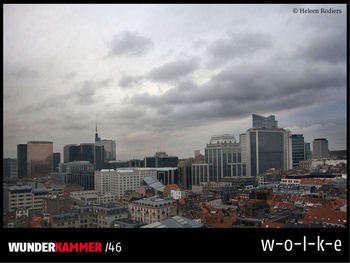
What’s in a name? W-o-l-k-e, a group of “thinkers and doers” that formed this year, couldn’t have chosen a better one. As incredible coincidence would have it (knowing that the Dutch word “wolk” means “cloud”), the extremely diverse, (for the time being) twelve-member company has found a space on the enormous eleventh and twelfth floors of the skyscraper that also houses the Polyclinique du Lothier. Large, open spaces alternate with smaller rooms; derelict space where w-o-l-k-e wants to create studios, residences, and meeting places. Surrounded by a staggering 360° view of Brussels. “We don’t have a concrete marketing plan or anything; it is purely coincidental. The name existed before we moved in here. We just liked the word; intuitively, it felt right. It causes friction, and might go any which way, like a cloud. And it also entails the freedom to lose your head in the clouds,” two of the company’s artists tell us. Names are unimportant though, the group has other plans. “On the one hand, everyone has their own studio to do their own thing, and on the other, each of us occasionally organises an exhibition. But there is no space between the white cube and your own studio. There is no space to exhibit your work unpretentiously; where you can make your method public and talk about it. That is where w-o-l-k-e’s fundamental idea emerged: in that emptiness and desire to be immersed in the in-between and to tackle that problem and lack. To go in search of a space where we can reflect on the question of whether there are other models for creation and presentation.”
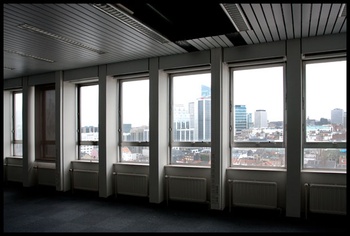
The twelve people behind w-o-l-k-e have very diverse backgrounds. “Yes, we aren’t only artists, there are also architects, urban designers, a furniture designer, a fashion designer, writers, etc. We cover more or less the entire artistic spectrum. Multidisciplinary? Perhaps… Or perhaps not disciplinary at all.”
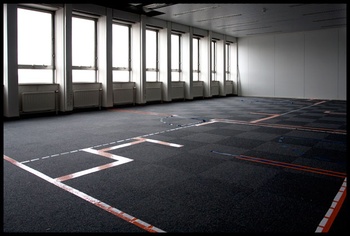
The members share enormous mutual trust. “We are not a collective. There is no ideal or higher purpose. Most importantly, we share the awareness of a problem. We have noticed that though there are many good artists in Brussels, they are fragmented and scattered. To some extent, that is a logical consequence of our society: we live in a metropolis where everything is constantly in flux. But we were struck by the number of people around us whose professional work is related to ours, but who we don’t collaborate with. This is a network that developed through encounters, and without being able to define it, we are all on the same wavelength. The simple fact that two of us are sitting here speaking for the whole group speaks volumes. Trust is extremely important. And we all ask the same questions: how do you make things? How do we work together?”
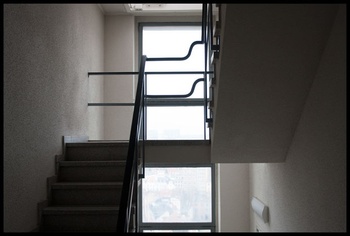
There is something almost utopic at w-o-l-k-e’s foundation: a space people can shack up together, and share knowledge, experiences, and materials, looking for alternatives to the institutionalised scene. “Yes, those first few weeks brought us down to earth with a bump. (Laughter) Decisions have to be taken at a professional level. If and when there are problems, they have to be addressed and solved. We’re in the grown-up world now. There are twelve of us at the moment. Like the apostles. We are still looking for a Messiah.” (Laughter)
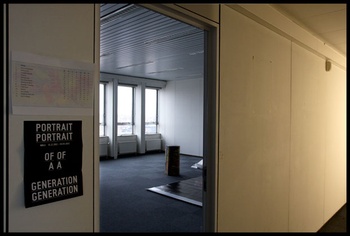
The group that makes up w-o-l-k-e is a dynamic set. People come and go. After only two months, the search for a group identity is still of central concern. It’s an undertaking the group wants to take its time for. “We would like to attract long-term partners and find a balance between the things everyone needs on the one hand – the things that ensure that we can grow as an organisation, including financially – and our identity on the other, because we also want to provide support. Our first resident will arrive soon, a Danish artist. We have to be here to support her, this is where we can really mean something. Finding a balance on all those different levels is the exercise we are faced with: letting something grow, but as stably as possible, so we can still control it and determine the face of what w-o-l-k-e is. That is very difficult: anyone can write a text with a vision, and everyone here has a solid vision, but the trick is not to do things too fast so that the resulting text is something all twelve of us can agree on.”
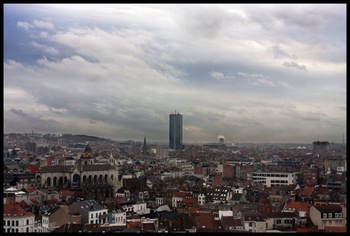
W-o-l-k-e completes this task by trial and error. The vision they aim to develop goes much further than the merely artistic. You sense that it was preceded by a moment of crisis. A moment at which existing models needed to be rethought. “Take Michelangelo Pistoletto and his Cittadellarte, for example. Pistoletto founded a veritable city of art, in which he aimed to integrate art and society with one another. How do you create something that is connected to society itself? His pertinent critique is that over the past few decades, art has focused primarily on freedom, and self-appropriating that freedom – anything goes – but at the same time, that got society no further. Pistoletto reacts to that problem: there is no freedom without responsibility. That is probably what every new generation of creators has to do: ask whether everything is the way people say it is, and whether there are no marginal notes that need adding. Can we do any better? That is our view too: we do it ourselves, or at least we question the status quo. Perhaps everything has become too level: the role of the artist has become too boring, too much based on a system that may no longer be relevant. Art has a purpose: uniting attitudes. And that is also a social responsibility.”
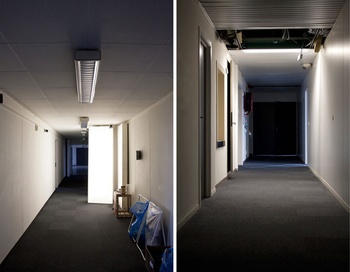
Hence the group’s diversity. “An architect and an urban designer will probably use the word ‘art’ less frequently, but their fundamental question is still the same. Starting from different perspectives, each of us comes to the same conclusions, once we start thinking outside the box, and we realise we’re talking about the same thing. The question is very fundamental: where are we going? We know what we have, and we’ve analysed it, now let’s try to look for a piece of new soil.”
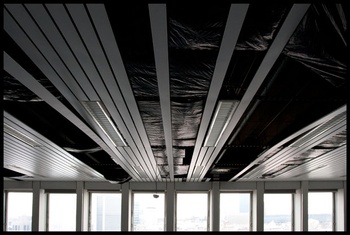
That agility is stimulating. “You walk in here and sparks fly. There is constant movement and enormous energy. One might read w-o-l-k-e like this: a collection of snow crystals, a cloud formed by all kinds of different, unique particles that changes shape constantly.”
Borough: Brussel/Bruxelles
Official opening: Soon!
Info: www.w-o-l-k-e.be
https://www.facebook.com/pages/Wolke/471392039591005?ref=ts&fref=ts
Photos © Heleen Rodiers
Borough: Brussel/Bruxelles
Official opening: Soon!
Info: www.w-o-l-k-e.be
https://www.facebook.com/pages/Wolke/471392039591005?ref=ts&fref=ts
Photos © Heleen Rodiers
Read more about: Expo
Fijn dat je wil reageren. Wie reageert, gaat akkoord met onze huisregels. Hoe reageren via Disqus? Een woordje uitleg.